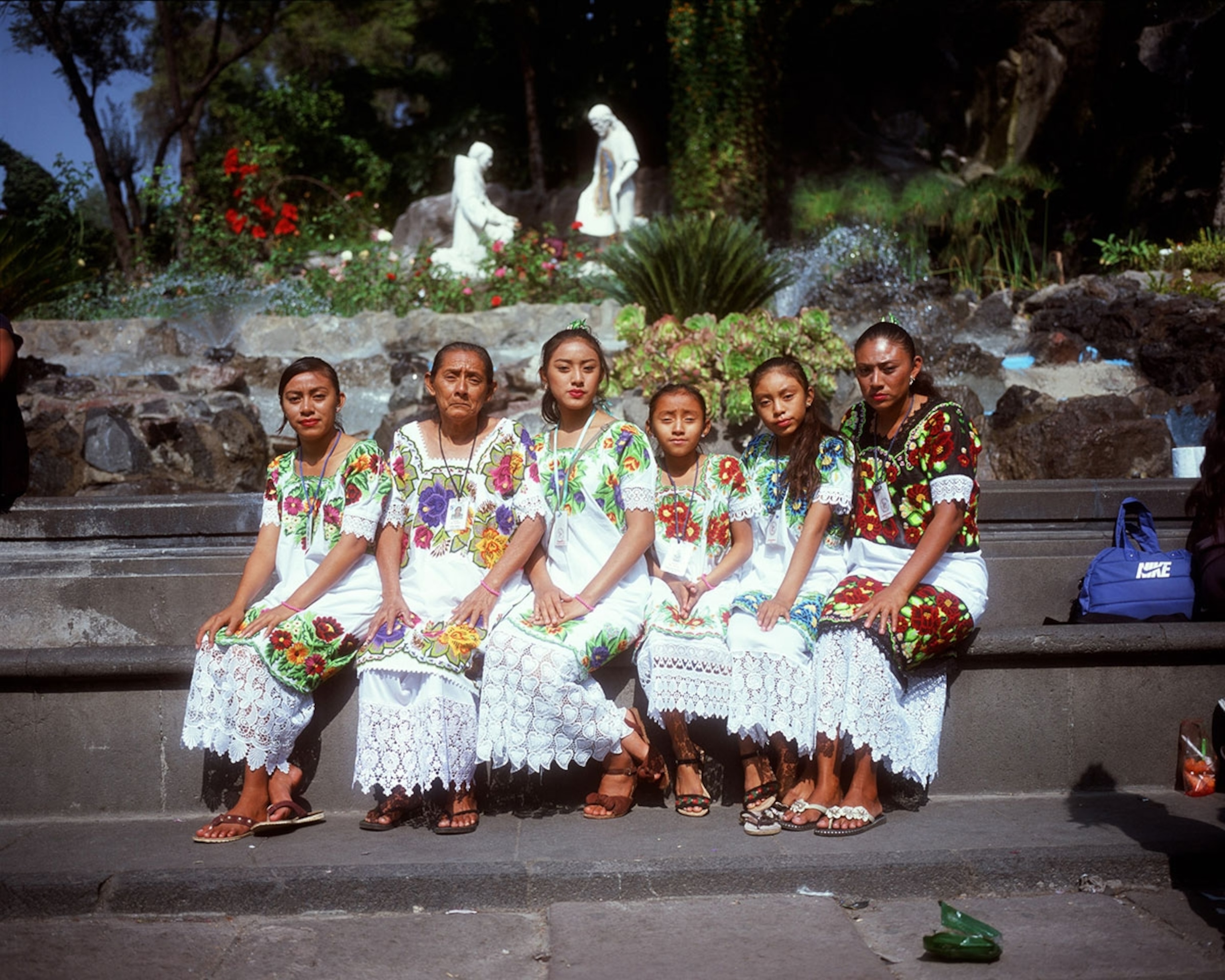
Why do millions of pilgrims descend on Mexico City?
By Debra Adams Simmons, HISTORY Executive Editor
Defeated and humiliated by Spain nearly 500 years ago, the native peoples of Mexico needed a miracle. A man named Juan Diego said he saw one—a vision of the Virgin Mary, telling him to build a shrine on the spot.
The Virgin of Guadalupe became Mexico’s patron saint—and, 20 years ago, the Vatican declared her the saint for all the Americas. Nearly 10 million pilgrims (six of them, pictured above) made their way to Mexico City last month in an annual pilgrimage to thank her for their health, to pray for miracles, and to show respect, writes Nat Geo’s Nina Strochlic.
Respect is at the heart of it, says Socorro Canstañeda-Liles, author of Our Lady of Everyday Life: La Virgen de Guadalupe and the Catholic Imagination of Mexican Women in America. “She’s so important, particularly to sectors of Mexico who are marginalized,” Canstañeda-Liles says. “She’s a symbol of dignity and affirmation of a people whose lives and religion are questioned.”
The story of Guadalupe shows us, as we steady ourselves these first days of a new year, that the desire for respect is both centuries old and as relevant as ever.
Do you get this newsletter daily? If not, sign up here or forward to a friend.
Today in a minute
The Allies' secret weapon: A town in Greenland was vital to World War II victory, Smithsonian reports. The abandoned mining community of Ivittuut held the world’s largest reserve of naturally occurring cryolite, which was used in building fighter planes.
‘The last witness’: With World War I’s combatants gone, the landscape itself is yielding new clues to historians and archaeologists, some of it buried less than a foot beneath the surface. Among the findings of one archaeologist: trench waders, teddy bears, and remains of 200 soldiers, only three of whom have been identified.
Speaking of clues: More sensitive DNA forensic machinery is helping to identify the remains of those murdered decades ago in Guatemala by soldiers and right-wing paramilitary groups, Nat Geo reports. For relatives of Francisco Curruchich, “disappeared” in 1983, an answer emerged three and a half decades later. His family was able to change the plate of his burial spot from an unidentified body’s number, 317-38-10, for one that said his name.
Beyond bowler hats: The Aymara, one of the largest indigenous groups in Bolivia, are tired of being seen only as performers, with women in full skirts, richly embroidered scarfs around their shoulders and tiny bowler hats perched on their heads. Photographer Manuel Seoane, a Nat Geo grantee, has sought to bust stereotypes with his portraits of the Aymara.
Your Instagram photo of the day

A chilly celebration: An igloo blazes against the afternoon twilight on Canada's Baffin Island, where the Inuit people have lived for thousands of years. Although most people no longer use igloos, except for emergency shelters, many Inuit still know how to build them. When constructed according to tradition, with the right type of snow and an angled entrance, these shelters can provide surprising insulation in a region where winter temperatures frequently reach 40 degrees below Fahrenheit. “During a winter I spent in the Canadian Arctic, I was invited to watch this igloo being made to celebrate winter solstice, to practice traditional skills, and also, largely, for fun,” writes photographer Acacia Johnson.
Are you one of our 128 million Instagram followers? (If not, follow us now.) +
The big takeaway
What we are is what our ancestors did. How they survived. We are the memories we don't remember, which live in us, which we feel ...Tommy Orange, NOVELIST, AUTHOR OF “THERE THERE”
Did a friend forward this to you?
Come back tomorrow for George Stone on travel. If you’re not a subscriber, sign up here to also get Victoria Jaggard on science, Rachael Bale on animal news, and Whitney Johnson on photography.
One last glimpse

From the vault: Two dancers in costume stand between the columns of Poseidon’s Temple, Greece, 1930.
Related: A self-portrait, by roving Nat Geo journalist Maynard Owen Williams